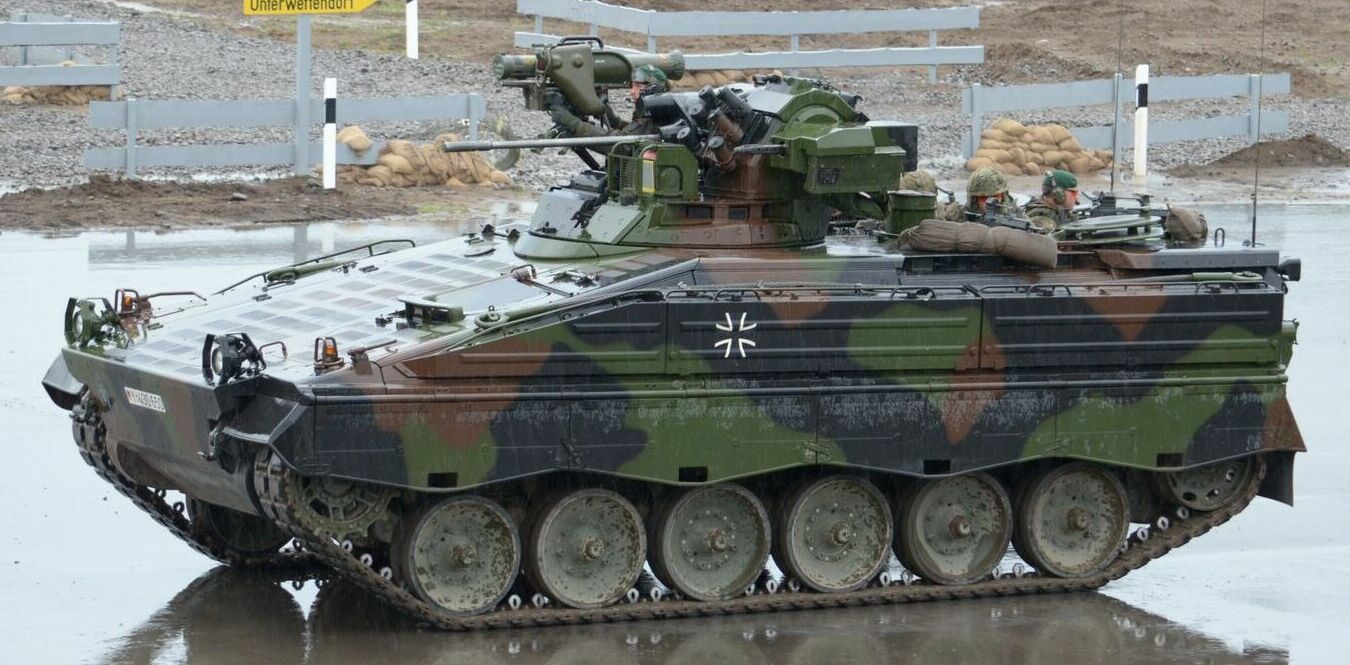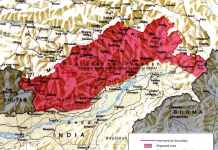A day after France announced sending the AMX-10 RC light tank to Kyiv, the United States and Germany followed suit and announced they were sending their respective armored vehicles to the embattled country.
A statement from the White House released on January 5 read, “The United States intends to supply Ukraine with Bradley infantry fighting vehicles, and Germany intends to provide Ukraine with Marder infantry fighting vehicles.”
For its military to advance past the heavily defended Russian positions along the frontline, Ukraine has consistently stated that it needed 600 to 700 infantry fighting vehicles and 300 tanks from the West.
Until recently, the US and Germany were reluctant to arm Ukraine with NATO-compliant weapons because Russia would see it as escalatory.
After months of reluctance, the decision to send armored vehicles comes at an opportune moment. The Russian ground offensive, especially in the Bakhmut region in Donetsk, has been catching pace, and Ukraine needs as much equipment as possible to fight the Russian troops. Earlier, Ukraine’s ground-based counter-offensive had won back Kherson, leading to calls for more armor.
Finally! The West is starting to deliver heavy armored vehicles to Ukraine. France has promised to deliver AMX-10 RCs, Germany will deliver Marders, and the USA will deliver Bradleys. These vehicles will save hundreds of lives and speed up Ukrainian victory! pic.twitter.com/QEwvzgEy7Y
— Roman ?? Sheremeta (@rshereme) January 6, 2023
The announcement for these vehicles started with France announcing the delivery of AMX-10RC, specifically designated as a Light tank.

The mobility and speed of the AMX-10 RC, previously used by French forces as a reconnaissance vehicle and tank killer during Operation Barkhane in Africa, would enable Ukraine to strike quickly and forcefully in close combat. However, its relatively low armor makes it vulnerable to powerful Russian weapons.
Similarly, the Bradley armored vehicle—which carries a powerful gun—has been a mainstay of the US Army for moving troops across battlefields. Thousands of Bradleys are available in the US Army, and using them would increase Ukraine’s firepower on the battlefield and improve its capacity for trench warfare.

The German Marder, despite its age, remains one of the world’s best IFVs owing to its blend of speed, protection, firepower, and capacity. This IFV can go at 40 mph while transporting six troops and three crew and is highly reliable.
Lt Col. J.S. Sodhi (retd) told EurAsian Times, “In any war fought in the plains and deserts, armored vehicles such as tanks or the Infantry Fighting Vehicles (IFVs), play a vital role as they have the immense firepower and cross-country mobility to take over the enemy defenses, and after that, the mopping up is done by the foot Infantry who then hold that piece of ground physically.”
Even though neither country has announced the delivery of tanks, the choice to provide Western armored vehicles is being touted as a breakthrough and a potential first step in that direction. However, Ukraine continues to press for cutting-edge Western tanks like the French Leclerc, the US Abrams, and the German Leopard-2.
Ukraine Continues To Press For Western Battle Tanks
After France announced that it would deliver the AMX-10 RC to Kyiv, the Ukrainian President said in an address: “This is something that sends a clear signal to all our partners. There is no rational reason why Ukraine has not yet been supplied with Western tanks.”
Zelensky’s statement was in line with Ukraine’s long-drawn appeal for Western advanced battle tanks that would allow his troops to pound the Russian frontline positions and push them back from the occupied territory.
Last month, Ukrainian officials intensified their pitch for Leopard-2 tanks, and there were speculations that Germany might send the tanks after a green light from the US. However, no such decision has been made by Berlin for fear of escalation with Russia.

As for Ukraine, after retaking Kherson from Russia, the military has decided to take back all occupied regions from Russian control. However, the country needs heavy tanks and long-range missiles to achieve that objective.
Even though the IFVs resemble tanks, they are not really comparable. Tanks are heavily armed armored vehicles built to destroy fortified objectives, fight other vehicles (especially other tanks), and take advantage of the enemy’s defense gaps, thanks to their off-road mobility.
In contrast, Infantry Fighting Vehicles (IFV) or armored vehicles transport infantry personnel to the frontline and engage in combat. The reduced primary weapon size of the IFV reflects this distinction, allowing more room for infantry and supplies. However, their armor is thinner than that of a tank and penetrable.
For perspective, the Bradley IFV being sent to Ukraine looks a lot like a formidable tank. It has two tracks for self-propulsion, is armored, and frequently sports the Abrams-typical explosive reactive armor. It engages in combat on the front lines and has a free-turning turret like a tank.

However, the vehicles’ objective and the main cannon’s size make a difference. A Bradley typically has a 25mm gun as opposed to the Abrams’ 120mm and considerably lighter armor than the Abram Main Battle Tank.
While the IFV can play a significant role, they can only protect against small arms fire and not the shelling the Russian troops use on the frontline.
Some military experts believe that even if the West decides to arm Ukraine with some of the most advanced MBTs in the world, it would not be a panacea for Ukraine in the absence of air superiority.
Indian Army Major General Raj Mehta (retd) told EurAsian Times, “In an environment where neither Ukraine nor Russia has air superiority, an environment rife with kamikaze drones, an area with water obstacles which either side holds with defenses, there would not be free runs for IFVs.
Besides, the extended use of armored vehicles or tanks without reasonable air space control is not a great idea. Add electronic warfare and 24×7 Russian artillery shelling, and the idea is more commercial than tactical.”
In a detailed conversation regarding the battlefield situation, the General also pointed out that using armored vehicles and tanks in open plain regions and a massive snow cover would not be as breakthrough as it is believed. He emphasized that the tanks would have to run on roads where they would most certainly be targeted by the enemy, as was the case with Russian tanks advancing toward Kyiv.
However, it may still be a few months before these armored vehicles arrive in Kyiv, as the Ukrainian troops will have to receive training to operate the systems.
These IFVs will likely assist Ukraine in launching a strong counter-offensive, as the snow would have melted by that time. The IFVs would then utilize cross-country movement, which is paramount in armored warfare.
- Contact the author at sakshi.tiwari9555 (at) gmail.com
- Follow EurAsian Times on Google News




